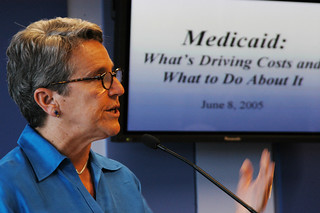Warning: Undefined variable $time_difference in /home4/hpvcxhmy/public_html/wp-content/plugins/similarity/similarity.php on line 324
Warning: Undefined array key 0 in /home4/hpvcxhmy/public_html/wp-content/plugins/similarity/similarity.php on line 336
Warning: Undefined variable $time_difference in /home4/hpvcxhmy/public_html/wp-content/plugins/similarity/similarity.php on line 324
Warning: Undefined array key 0 in /home4/hpvcxhmy/public_html/wp-content/plugins/similarity/similarity.php on line 336
In the practice of medicine we have come a long way from the days when doctors could do little more than treat the symptoms their patients were experiencing and hope that they were physically strong enough to recover from the underlying condition that was producing the symptoms. There are still times when doctors are limited to treating symptoms – such as when a condition has not been diagnosed yet or when it is so far advanced that it is beyond the reach of our available medical care – but generally in modern times our doctors seek to treat the underlying cause of a problem rather than the symptoms. We need to do more of that in the healthcare industry – especially as it relates to our most pressing chronic condition in the industry: uncontrolled costs.
The first step in treating an underlying problem is to correctly identify it. As is often the case with health problems, our healthcare industry is suffering from multiple underlying problems which interact with each other in ways that magnify their combined effects and often make an accurate diagnosis difficult to make. Thankfully we have had people interested enough in this issue for long enough to have made some headway in identifying at least some of the more pronounced underlying problems. These include the cost of new medicines and health care technologies, weakening of market influences in our health care decisions, misaligned incentives in the system, and inefficiencies in the practice of medicine (like misdiagnoses, inaccurate record keeping, reliance on emergency care by some patients, and problematic record sharing between parties).
I can’t claim to have solutions to all of these underlying problems, nor can I be sure that these represent a complete set of the real problems driving our symptom of skyrocketing costs. On the other hand, I am confident that the way we will solve the problems in our healthcare industry will follow the same pattern that people used to solve the problems that the practice of healthcare has become so adept at addressing. It will require many individuals and groups tackling the problems from a variaty of perspectives and experiementing with a variety of solutions. It won’t be done simply by turning the problem over to government and expecting them to insist on providers not charging outrageous amounts for the care we wish to receive (which is essaentially the premise behind the Affordable Care Act).
While I am anything but optomistic about the eventual benefits of the Affordable Care Act, I am encouraged at many other examples of private organizations taking steps to identify and address various of the systemic problems that afflict our health care system. Some of the initiatives I know of which give me hope is the innovative ways that some companies try to reduce health care costs without reducing employee benefits (Walmart, for example), the growing prevalence of individuals having high deductible insurance plans coupled with health savings accounts (which helps to introduce stronger market forces and healthier incentives into the health care system), efforts to bring more transparency to health care from groups like Pricing Healthcare, experiments in combining data-mining with hands-on care to reduce the costs associated with statistical outliers, and the rise of Direct Primary Care Practices and retail clinics.
We are nowhere near solving this problem and we need much more in the way of innovation and fresh perspectives but we have reason to hope that this problem will be cured in time.
- Growing Discomfort (1.000)
- Conspiracy of Confusion (1.000)
- Do We Have Reason To Celebrate? (1.000)
- The Scary Flu Monster (0.837)
- Suggestions on Health Care (0.663)
- Jeffs Guilty Verdict (RANDOM - 0.500)
